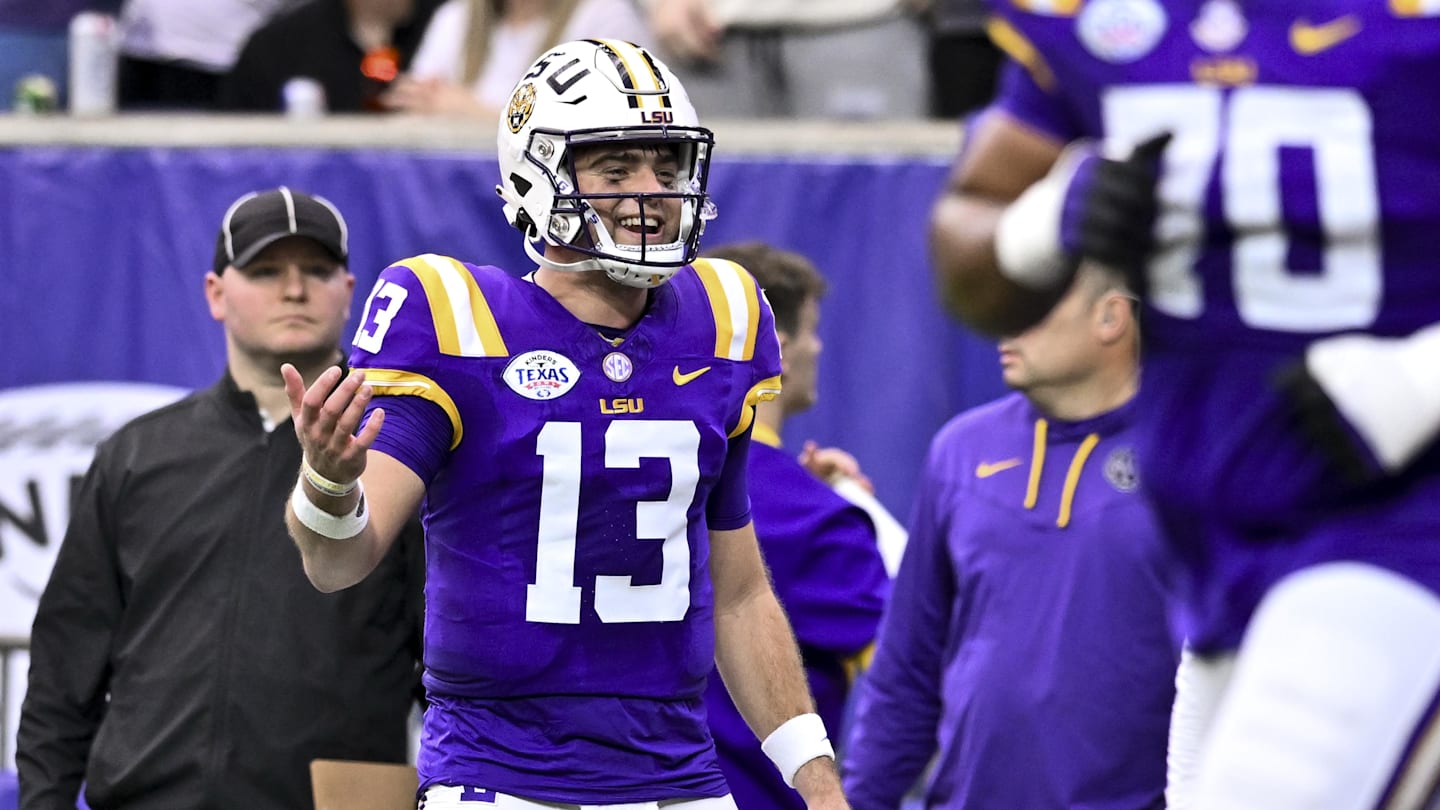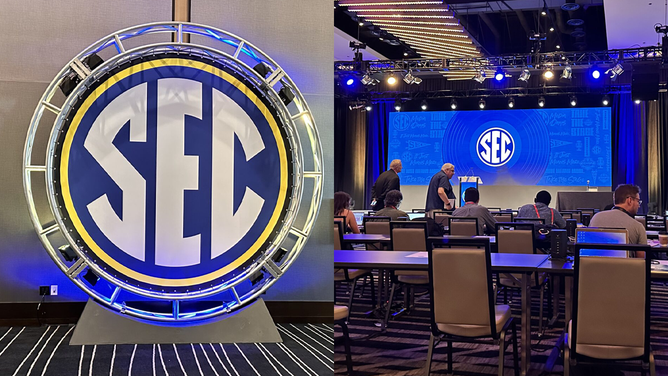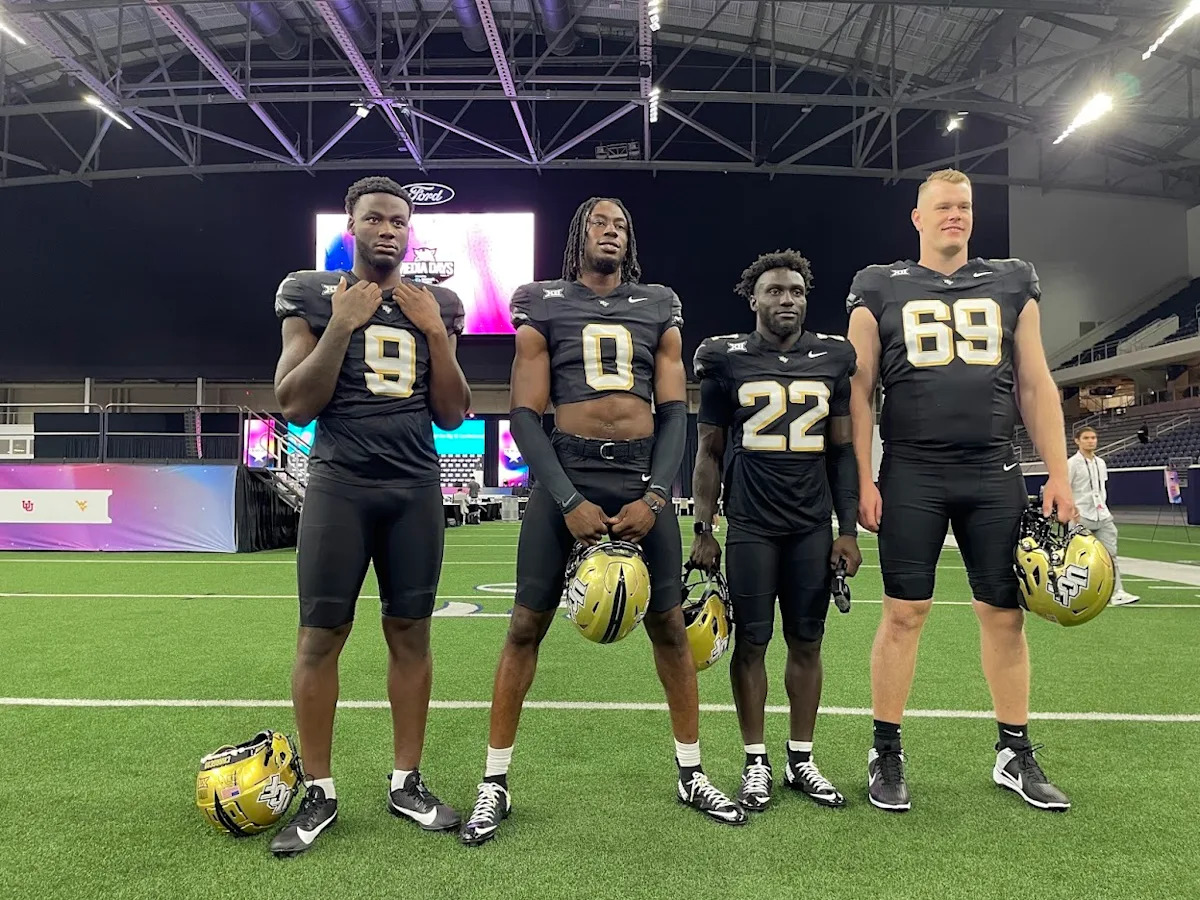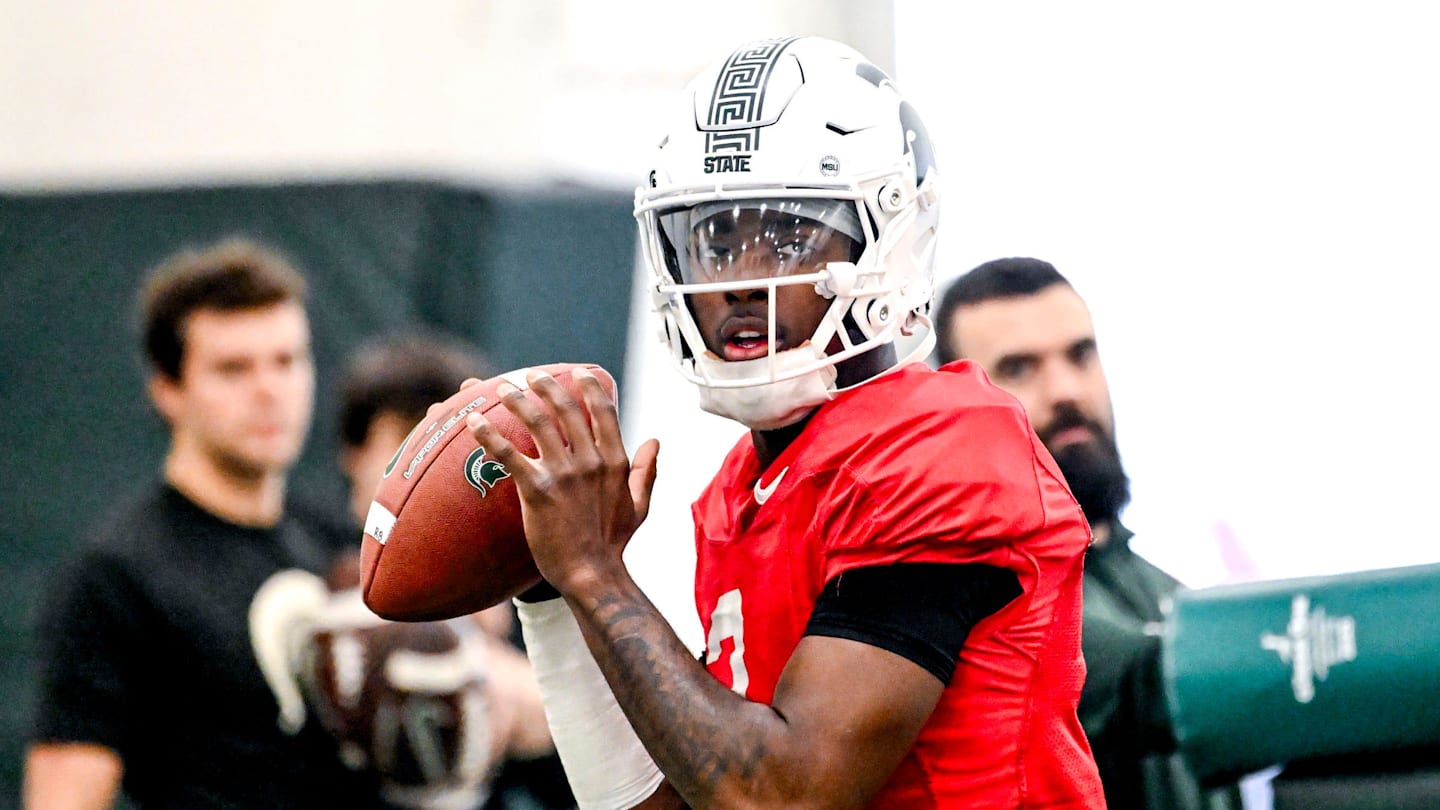Image credit:
Gage Wood (Photo by Eddie Kelly/ ProLook Photos)
The MLB Draft is equal parts projection and persuasion—a search not just for talent, but for belief.
The 15 players highlighted below are among the most compelling college names in this year’s class, each for a different reason. Some lit up Omaha, some carry freakish tools, others are works in progress with tantalizing ceilings. This isn’t a ranking. It’s a snapshot of the players who captured our attention—and who might soon convince a front office to call their name early.
More Draft Coverage
Kade Anderson, LHP, LSU (BA Draft Rank: 4)
If Anderson’s brilliance wasn’t already clear by the time he reached Omaha, he removed all doubt once he got there. The LSU lefthander allowed just one run over 16 masterful College World Series innings, striking out 17—including a complete-game shutout in the national title game. His performance was surgical, unflinching and final.
But the truest measure of Anderson’s dominance came not from the stat sheet, but from the mouths of those who tried to hit him.
“He toys with you,” teammate Steven Milam told Baseball America.
That sentiment echoed through the LSU dugout and well beyond it. Armed with a fastball that danced at the top of the zone and breaking balls that spun at 3,000 rpm, Anderson carved his way through the 2025 season as the nation’s top college arm. He led Division I in strikeouts, earned first-team All-America honors, won Baseball America’s inaugural College Pitcher of the Year award and—fittingly—was named Most Outstanding Player in the College World Series.
To LSU head coach Jay Johnson, the decision for the No. 1 pick is obvious.
“His next pitch,” Johnson said in Omaha, “should be for someplace in the Washington Nationals organization. It’s not close.”
Jamie Arnold, LHP, Florida State (BA Draft Rank: 6)
There’s little mystery to Arnold’s place near the top of draft boards. The Florida State lefthander led the Seminoles back to national prominence with a 2.98 ERA and 278 strikeouts over 190.1 innings since the start of 2024, all while dominating in the crucible of the ACC.
But what makes Arnold compelling isn’t just what he is. It’s what he’s becoming.
Once a two-pitch arm, Arnold spent the offseason developing a changeup to round out his arsenal. By spring, it had turned into a real weapon—arguably too effective, he joked.
“It moves a ton so sometimes it’s hard to gauge where to start it,” Arnold told Baseball America. “But I’d say that’s a pretty good problem to have at this point.”
Arnold throws from a deceptive low slot and pitches with a poise that belies the pressure of his draft status. Where others might tighten, he leans in. Scouts believe that changeup could grade as plus or even double-plus in time, adding even more ceiling to an already high-floor profile.
Arnold enters the first round with one of the most complete arsenals in the class—and the mindset to keep sharpening it.
Liam Doyle, LHP, Tennessee (BA Draft Rank: 8)
When Doyle returned on two days’ rest to close out Tennessee’s regional final against Wake Forest, some called it reckless. Tennessee head coach Tony Vitello had a different take.
“He’d have killed me if I didn’t let him go back out there,” Vitello said—smiling, but only partly joking.
That moment distilled what makes Doyle so compelling. His fastball is a unicorn: a double-plus four-seamer from the left side that dominated hitters all spring. But it’s his mindset—his unrelenting, almost murderous competitiveness—that sets him apart.
Doyle nearly edged out Anderson for the national strikeout lead and regularly overwhelmed hitters with just that one pitch. His secondaries lag behind, but evaluators rave about his makeup and believe it will carry him through the developmental process.
Doyle’s profile isn’t complete, but his drive is. He’s the kind of pitcher who grabs 100 mph on short rest and dares you to swing. And that might just be enough.
Tyler Bremner, RHP, UC Santa Barbara (BA Draft Rank: 11)
Bremner’s 3.49 ERA might not dazzle at first glance. But look closer—over the final six weeks of the season, few pitchers in the country were better. From April 4 to May 16, Bremner struck out 74 while walking just 10 in 43.1 innings, posting a 2.91 ERA and showcasing why so many evaluators believe in his upside.
The 6-foot-2 righthander owns one of the best changeups in the draft and pairs it with advanced command, mid-90s velocity and a calm, controlled delivery. His slider remains a work in progress—flashing promise but needing refinement—but his feel for sequencing and zone control gives him a strong foundation.
More than anything, Bremner’s second half told the story. He didn’t just improve—he surged, revealing the kind of polish and poise that wins over decision-makers in draft rooms. His best ball is still ahead of him and that sentiment could very well push him into the top-15 picks on Sunday night.
Gage Wood, RHP, Arkansas (BA Draft Rank: 18)
No 2025 draft-eligible player delivered a more jaw-dropping moment than Gage Wood. On the sport’s biggest stage, the Arkansas righthander threw just the third no-hitter in College World Series history—missing a perfect game by a single hit batter—and broke the event’s strikeout record with 19.
It was a performance that felt mythic. But for those who’d seen him all year, it wasn’t a surprise.
“He had the best fastball in the SEC,” one opposing coach told Baseball America, calling it an “easy 80” on the scouting scale.
Wood’s fastball—explosive, late-rising and dominant—is his calling card, drawing comparisons to past SEC flamethrowers like Ty Floyd, who previously held the CWS single-game strikeout record. But he’s no one-trick arm. His curveball flashes plus, his slider and changeup show real promise, and his command tightened considerably in 2025.
For scouts who were already convinced, Omaha was simply confirmation. For everyone else, it was a revelation. Expect Wood to hear his name well before Day 1 ends.
Luke Stevenson, C, North Carolina (BA Draft Rank: 25)
Only 16 Division I hitters drafted in the first round since 1982 batted under .300 in their draft year. Stevenson is likely to become No. 18 after Texas A&M outfielder Jace LaViolette becomes No. 17 on Sunday night.
The North Carolina catcher hit just .251 this spring—a figure that puts him in rare and rather unflattering company—but also posted a .414 on-base percentage, walked nearly as many times as he struck out and mashed balls with a 96.5 mph average exit velocity, one of the best marks in the country.
It makes Stevenson one of this year’s most polarizing prospects. The hit tool is a legitimate concern, but almost everything else checks a box. He’s a plus receiver and blocker with an above-average arm, he controls the zone and he plays a premium position. He also doesn’t turn 21 until late July, giving him age-based upside.
The questions now: Which teams will overlook the batting average? And how high are they willing to take him?
Cam Cannarella, OF, Clemson (BA Draft Rank: 27)
Cannarella does almost everything well. He’s a plus runner, a gifted defender in center field with elite instincts and range and a hitter with feel, bat speed and the potential for more power as his frame matures.
But for all that promise, there’s one glaring red flag.
Cannarella’s throwing arm is well below-average—closer to bottom-of-the-scale than just weak. He tore his right labrum as a sophomore, played through it, then underwent surgery before the 2025 season. Though he mostly returned to form at the plate, he was absent from pregame throwing drills and showed severely diminished arm strength in games. Scouts don’t expect him to ever reach average in that category.
At 6 feet, 180 pounds, Cannarella is a classic hit-over-power profile with some physical projection left. The power may come. The arm likely won’t.
Still, elite center field defense is a rare commodity—and that, combined with his contact skills and speed, may be more than enough for a team willing to live with the risk.
Caden Bodine, C, Coastal Carolina (BA Draft Rank: 29)
If you ask opposing coaches who the best defensive catcher in this year’s draft is, many won’t hesitate: Caden Bodine.
“He’s the most complete receiver in the country,” one coach told Baseball America. And the numbers—and eyes—back it up.
Bodine is a high-level pitch framer with an elite feel for stealing strikes, a polished blocker and a strong, accurate arm. His work behind the plate helped anchor Coastal Carolina’s run to Omaha and earned him a reputation as the best defensive catching prospect in the class.
Offensively, Bodine brings advanced bat-to-ball skills and a discerning eye, but his lack of power raises questions about how his offensive game will translate to pro ball. He controls the zone, but the thump is light. In pro baseball, even strong defenders eventually need to do some damage.
Still, organizations value defense at catcher more than ever. And Bodine’s rare polish and poise behind the plate will give him a long runway to figure out the rest.
Devin Taylor, OF, Indiana (BA Draft Rank: 34)
Taylor didn’t leave much room for debate in 2025. He batted .374/.494/.706 with 18 home runs, 13 doubles, 12 stolen bases and drew 52 walks to just 30 strikeouts—numbers that only solidified what he’s been since arriving in Bloomington. Across three college seasons, he never posted an OPS below 1.080 or hit fewer than 16 home runs.
In a draft light on proven college bats, Taylor stands out. His offensive polish, power and patience make him one of the safest bets to hit at the next level.
The question is how much value he can provide elsewhere. Taylor is a below-average athlete who’s likely confined to left field, where his glove and range may limit his impact. But when you hit like he does, teams tend to find room.
He’s a bat-first prospect in a draft starving for college bats—and that alone makes him a strong first-round candidate.
Patrick Forbes, RHP, Louisville (BA Draft Rank: 47)
Forbes is more blank canvas than finished product, but it’s the kind of canvas that comes with unopened paint in all the right colors.
After two years flashing vibrant stuff in relief, Forbes moved into Louisville’s rotation in 2025 and surged up draft boards with a brilliant opening month. The full body of work was less consistent—he finished with a 4.42 ERA over 71.1 innings—but the ingredients were undeniable: a 36.7% strikeout rate, a career-best 10.7% walk rate and flashes of dominance that few in the class could match.
Forbes is a dynamic mover with a whippy arm and a fastball that explodes out of a low three-quarters slot. It sits mid 90s and can touch 100 with late ride, especially dangerous at the top of the zone. He pairs it with a power slider that morphs in shape—sometimes tight and vertical, other times sweeping across the plate—especially effective against righthanded hitters.
His command remains fringy and his changeup rarely appears, but the raw tools are as loud as any arm on the board. What Forbes becomes will depend on which team is ready to pick up the brush.
Cam Leiter, RHP, Florida State (BA Draft Rank: 85)
Few players in this year’s draft offers more unknown—or more upside—than Leiter.
He transferred to Florida State after a solid freshman year at Central Florida and wasted no time showing scouts what made him one of the most electric arms in the class. In just seven starts and 35 innings in 2024, Leiter struck out 56 batters with a high-octane arsenal before a shoulder injury ended his season. Attempts to rehab eventually gave way to surgery, and Leiter didn’t throw a pitch in 2025.
When healthy, he’s a live-armed righthander with a 94-96 mph fastball that’s touched 99 and generated a 30% miss rate. He spins two distinct breaking balls—a hammer curve in the low 80s and a power slider that can blur into cutter territory at its top end velocity. Both flash plus. Against lefties, Leiter will fold in a firm changeup that keeps hitters off balance.
The injury history clouds his draft stock, but the pure stuff and 6-foot-5, 235-pound work-horse frame are loud enough to carry real belief. For teams willing to take a leap, Leiter offers the kind of upside few others can match.
James Quinn-Irons, OF, George Mason (BA Draft Rank: 87)
At 6-foot-5, 230 pounds, Quinn-Irons didn’t look like someone who belonged in the Atlantic 10. And by the end of his career, he didn’t play like it either.
His junior season at George Mason felt like a parting gift. He hit .419 with 16 home runs, 24 doubles and 36 stolen bases while drawing walks, hitting for power and punishing pitchers who dared challenge him in the zone. It was the kind of year that turns heads in any conference. In the A-10, it bordered on absurd.
Quinn-Irons always had the frame, the athleticism, the raw tools. But in 2025, everything started to sync. The swing tightened. The chases came down. And while he still didn’t see much premium velocity, scouts could finally start dreaming big on a player who combined size and speed in ways few others in this class can.
He played all three outfield spots in college, and there’s a chance his straight-line speed keeps him in center. If not, the arm plays in right. Either way, Quinn-Irons was a giant for the A-10. Now he gets a bigger stage.
Cody Bowker, RHP, Vanderbilt (BA Draft Rank: 98)
Without high-octane velocity, Bowker might not be your typical SEC arm.
The Maine native began his college career as a two-way player at Georgetown, quietly flying under the radar until he committed fully to pitching as a sophomore. That decision changed everything. A transfer to Vanderbilt in 2025 gave him a national stage, and he made good on it—posting a 4.38 ERA with 99 strikeouts over 72 innings in the toughest conference in the country.
Bowker doesn’t overpower hitters, but he confuses them. His low-slot delivery adds funk and deception, making his 92–94 mph fastball—which will bump 95—play well above its velocity. His changeup is his best secondary, a fading, tumbling pitch that tunnels beautifully off his fastball and gets swings from both sides. He mixes in a slider and cutter that can sometimes blend, and his continued growth might depend on separating those shapes or introducing a softer breaking ball.
Bowker isn’t finished yet, but the progress is real—and evaluators have noticed. He’s a late-blooming, Northeast-built righty with the traits and temperament to start and the ceiling of a sneaky valuable Day 1 pick.
Grant Jay, C, Dallas Baptist (BA Draft Rank: 128)
There’s nothing subtle about the way Jay plays baseball.
Thickly built and power-packed at 6 feet, 225 pounds, Jay leaves an impression the moment he steps in the box. He hits the ball hard—and often, far. In 2025, he slugged 19 home runs, swiped 14 bases and became Dallas Baptist’s all-time home run leader, blending brute strength with surprising athleticism.
His hands are fast, his wrists strong, and when he connects, the ball jumps. But there’s some volatility baked into the profile. Jay’s swing can lengthen, and his aggressive approach leads to both below-average chase and zone contact rates. It’s a power-over-hit package, especially for a catcher.
That’s where things get interesting. Jay moves well for his size and owns a strong arm, but the finer points of catching—receiving, blocking, consistency—still need work. Some scouts see a future first baseman or corner outfielder. Others think the right development path could keep him behind the plate, where his offensive upside carries far more weight.
For a team willing to bet on strength, tools and positional value, Jay is the kind of swing worth taking. He could be a sneaky Day 1 pick.
Brody Donay, C, Florida (BA Draft Rank: 217)
Of the 15 players on this list, Donay is the least likely to come off the board on Day 1. But he might be the most fascinating gamble.
At 6-foot-5 and 235 pounds, Donay is hard to miss. He’s a towering presence with rare strength and some of the loudest raw power in the class. After transferring from Virginia Tech to Florida, a few subtle swing tweaks—wider base, quieter hands—unlocked a career year. He hit .303 with 18 home runs and posted the best strikeout and walk rates of his career. When he connects, the ball leaves in a hurry.
But getting to that power isn’t always easy. Donay remains a free-swinger with a high chase rate and one of the lowest contact rates among projected top-10 round picks. His defense is similarly split: a cannon arm but slow mechanics and below average receiving. Florida often used him at designated hitter, and his long-term home might be first base or right field.
He’s a player of extremes—huge tools, huge question marks. The team that drafts Donay won’t be playing it safe. But if it hits, the reward could be just as big as the risk.




























































